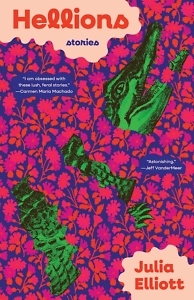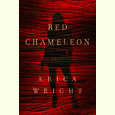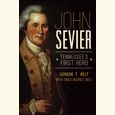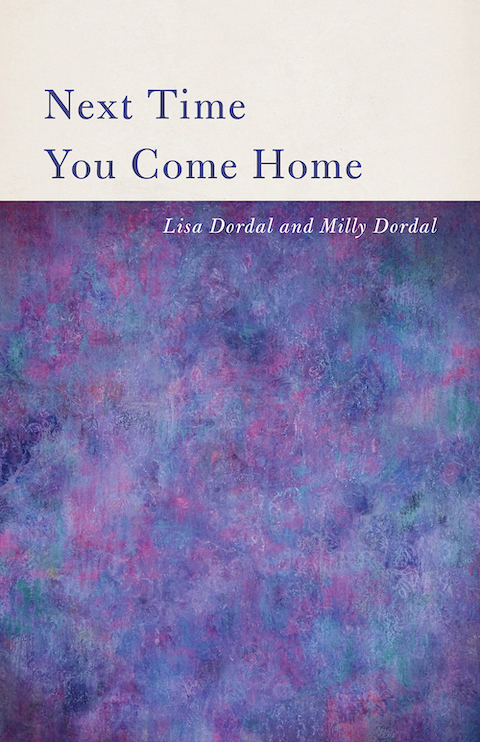Normal Life Impossible
Julia Elliott’s stories teem with natural and supernatural creatures
In her new story collection Hellions, Julia Elliott embraces the grotesque, playing with a rich literary tradition and molding it into something wholly her own. These tales teem with supernatural creatures — demons, hags, changelings, and swamp apes — but it’s the humans who are most compelling.

Hellions opens with “Bride” in which the nun Wilda flagellates and starves herself to purge her body of sin, specifically lust. As the nuns and monks around her begin to drop from some sort of plague, Wilda instead starts to have celestial visions. She foresees that Jesus will choose her as his bride because of her purity. Her quest is complicated by a pretty new acolyte who flouts the rules as soon as she arrives. This young woman is only the first rebel to appear in these pages. Elliott has a soft spot for the rabble-rousers and troublemakers. In these stories, she champions the hellions.
The collection title refers to a group of preteens who like to brawl, smoke, showboat in their four-wheelers, and generally wreak havoc in their backyard swamps. When Butter, the protagonist of the story “Hellion,” is left in charge of her city cousin, she protests being called a lady. “I’m a hellion, too,” she insists. She revels in her role as mentor, though, assuring her kin that she can show him a “whole ‘nother universe.” She proclaims that she can “[t]each you how to drive a go-cart, how to shoot an air rifle, plus several techniques for handling a live gator. How to creep up on the Swamp Ape without making him bellow. Show you flesh-eating plants, the plat-eye demon floating over black water, and forest fairies mooching from hummingbird feeders.” And only a few of those boasts are lies.
Most of the protagonists in Hellions are girls or young women trying to make sense of themselves in a violent, unstable world. They run amok and find ways to transform into something new. What’s refreshing about these stories is the agency given to the heroines.
 In “Erl King,” the Wild Professor morphs into a half-stag creature before seducing a college student. He teaches her about poisonous mushrooms, Old High German spells, and poetry. “His brain was a beehive on the verge of swarming,” Elliott writes. (An apt description of the writer’s own creative mind perhaps.) The protagonist is seduced by the professor, yes, but more by the limitless power of knowledge. Eventually she teaches herself how to transfigure, leaving him in the literal dust when her friends pick her up in their Volkswagen Rabbit.
In “Erl King,” the Wild Professor morphs into a half-stag creature before seducing a college student. He teaches her about poisonous mushrooms, Old High German spells, and poetry. “His brain was a beehive on the verge of swarming,” Elliott writes. (An apt description of the writer’s own creative mind perhaps.) The protagonist is seduced by the professor, yes, but more by the limitless power of knowledge. Eventually she teaches herself how to transfigure, leaving him in the literal dust when her friends pick her up in their Volkswagen Rabbit.
The Wild Professor quotes John Keats, but it’s Christina Rossetti’s “Goblin Market” that springs to mind. In many of Elliott’s stories, the characters overindulge in sweets, meats, and liquor. There’s a feeling of glut and nausea rather than nourishment. In “The Mothers,” the titular parents smoke so much weed and drink so much wine that it’s difficult to tell if their children are imbued with dark magic, or if they’re just preternaturally creative and unsupervised.
The story “Erl King” derives its title from Angela Carter’s “The Erl-King,” and it’s easy to spot Carter’s influence in these yarns that combine magical realism and feminism. But Elliott’s Appalachian settings take full advantage of the landscape’s unique atmosphere and legends. These stories almost seem like dares. Readers can dismiss them at their own peril.
Hellions is Elliott’s second story collection. Her first, The Wilds, was a New York Times Book Review Editors’ Choice. She is the author of the novel The New and Improved Romie Futch, which also samples from a variety of genres. Elliott’s imagination cannot be contained by labels.
In “All the Other Demons,” a restless 12-year-old girl bears witness to her family’s unraveling during a hot, stagnant summer. The only thing that brings them together is The Exorcist, though it scares the daylights out of the three younger brothers. The unnamed protagonist is rapt, though, turning to the screen in the middle of the night, hoping for a glimpse of the possessed girl Regan. She is not disappointed, and Regan hovers outside of the television set, doling out endless wisdom described as “ravishing truths that would make normal life impossible.”
Elliott traffics in these truths herself, with her feral cast of characters learning a potent combination of life lessons and erudite information. With Hellions, Elliot offers stories that defy categorization, challenging readers to see the world as limitless, beyond understanding, and therefore worth exploring.

Erica Wright is the author of four crime novels and two poetry collections. Her essay collection Snake was released in 2020, and Hollow Bones was recently published by Severn House. Wright grew up in Wartrace, Tennessee, and now lives in Knoxville.


